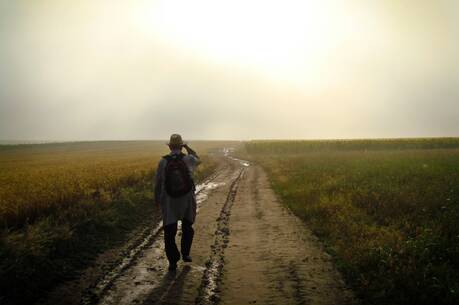These Four Kings
A favorite game of children of all ages is hide-and-seek. There is a certain thrill in thinking that one can become momentarily invisible to the seeker. Then come the peals of delight and surprise when the hiding place is discovered and once again one’s whereabouts are clearly known. Today’s feast centers on the hiddenness of God’s plan having been revealed to all, without discrimination. For Jew and Gentile alike, God’s love bursts forth like a light that pierces the darkness, like a child’s squeals of delight when found. There is no hiding from this wondrous gift as it reaches to the ends of the earth.
There is a tradition in Latin America and in Hispanic communities in the United States that on El Día de los Reyes, the “Day of the Kings,” a small plastic baby Jesus is hidden in a cake baked specially for the feast day. The figurine is nestled within the dough, signifying the efforts to hide the child Jesus from the evil intentions of King Herod. As the cake is cut, the slicing knife represents the danger posed to the infant Jesus by the cruel king.
In some places the tradition is that whoever gets the piece of cake with the figurine is obliged to host the next family gathering on Feb. 2, the feast of the Presentation. In other places, the one who finds the baby Jesus in his or her portion receives an array of gifts from those present. These traditions make tangible both the danger inherent in the revelation of the Christ and the excitement of the hidden designs of God become manifest.
In the Gospel, the danger is most palpable as the exotic visitors from the East wisely discern the true king who has been revealed, in contrast to Rome’s puppet king, who wants to engage in a sinister version of hide-and-seek. Herod tries to get the Magi to “search diligently for the child” and then bring Herod word when they find him. But the plan is foiled when a divine warning in a dream directs the Magi to return to their country by another way.
These visitors from an unknown land also lead us to reflect on the gifts that come to us in hidden ways from those we regard as strangers. Their odd dress, their different colored skin and unintelligible tongue immediately put us on guard.
Those who are different are often a source of fear for us, but in today’s Gospel they are friends, co-heirs to the promise and the first to recognize the hidden plans of God. In the Gospel narrative, these extraordinary visitors appear only briefly. Would we welcome such strangers, who reveal the hidden Holy One in our midst, if they were to stay?
This article also appeared in print, under the headline “These Four Kings,” in the December 21, 2009, issue.







